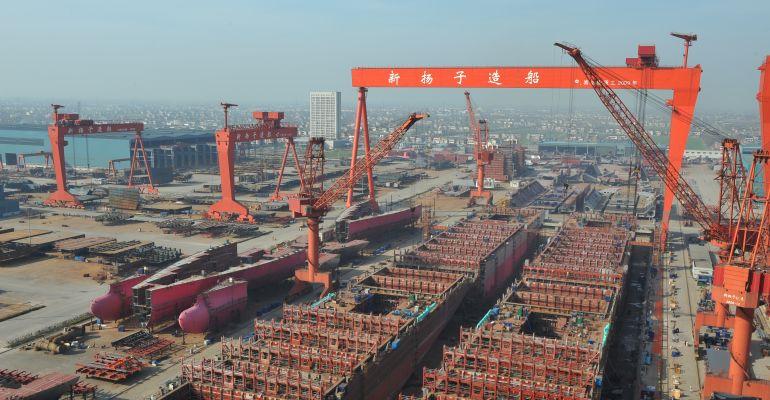Those were the top level figures from the 16th annual analysis of key developments in global ship finance by Greece’s Petrofin Research.
Ted Petropoulos, head of Athens-based Petrofin Research, notes Asian and Australian banks (APAC) show significant growth, especially in their market share, which has increased from 43% to 45%. In terms of actual exposure, their portfolio amounts to $127.94bn compared to $120.83bn in 2022.
Among key findings of the analysis is that Europe still represents the biggest ship finance area at 50% of the top 40 banks, with lending at $141bn. The US remains home-bound while Europe has shown a marginal decrease.
Greek banks showed a significant y-o-y growth of 13% from $13bn in 2022 to $15bn in 2023. Greece’s market share increased from 4.6% to 5.2%. French and Belgian and other European banks' portfolios also showed rises.
Petrofin Research reports that the total global bank lending of all banks, including local banks, is approaching $375bn, i.e. approximately 62% of all types of the global ship finance total down from 67%.
“We can provide a cautious, indicative figure for global ship finance, including all forms of lending - leasing, export finance and alternative providers - of approx. $600bn. Interesting to note that Clarksons estimates the global fleet value at $1.5trn,” said Petropoulos.
“It should be noted that non-bank lending is showing considerable higher growth than bank lending over the years.”
Japanese banks now figure more prominently in global ship finance holding 22% of the top 40 banks. This development is supported by the weak yen and rapid rise in Sale and Leaseback transactions (SLB).
“It should be noted that Japanese banks provide primarily loans to either Japanese owners or Japanese owned but international bareboat charterers,” said Petropoulos.
Poseidon Principles, a framework for encouraging decarbonisation of shipping through finance, now incorporates 35 signatories, which represent $300bn in shipping finance.
ESG considerations and bank strategies continue to favour bank ship lending towards eco vessels and Petrofin notes “there is increasing evidence that sustainability has become more prevalent in bank lending”.
Despite good efforts towards decarbonisation, there still remain doubts as to the required technology and its cost to meet the zero-emission target. Such concerns are shared amongst all stakeholders including lenders, said Petrofin.
Copyright © 2024. All rights reserved. Seatrade, a trading name of Informa Markets (UK) Limited.
Add Seatrade Maritime News to your Google News feed.  |

